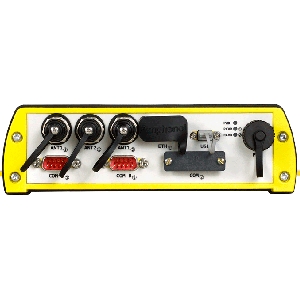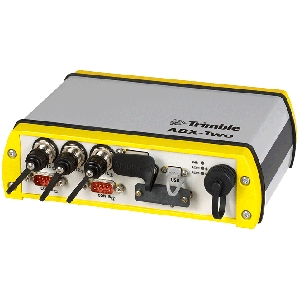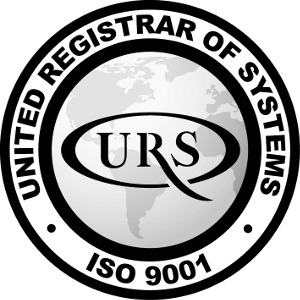Trimble ABX-TWO
Spécifications
|
|

|
Produit en fin de vie.
Modèle actuel : BX992 ou BX940
High performance compact OEM sensor
Trimble ABX-TWO
The Trimble® ABX-Two is the successor to the Trimble ABX
Series OEM sensors. The Trimble ABX-Two provides faster Dual Frequency
based Heading acquisition and an improved positioning engine with additional GNSS signals.
In addition the ABX-Two can support two modules that can be used for Precise
Platform Position (P3) using data from three antennas for full GNSS attitude.
|

|
Key Features:
- Dual Core Engine with Z-Blade Technology
- Precise Platform Positioning (P3)
- Web User-Interface
- Precise Point Positioning using Trimble® RTX
- Correction Services:
- Trimble® CenterPoint® RTX for sub 4 cm accuracy
- Trimble® RangePoint® RTX for sub 50 cm accuracy

|
High performance RTK, PPP and 3D attitude
Trimble has continued to raise the bar in
OEM GNSS attitude determination and
real time positioning with the new ABXTwo
OEM sensor. Built on the strength
of its predecessors, ABX-Two delivers
unsurpassed accuracy in a compact,
rugged system. Powered by two MB-Two
boards, the ABX-Two is a comprehensive
sensor that will deliver precise heading, pitch
and roll along with 3D position solutions
up to centimeter-level accuracy. Unlike
inertial sensors, ABX-Two provides driftfree,
absolute attitude solution. Versatile,
lightweight and smart, ABX-Two is the ideal
solution for a wide variety of airborne, marine
and terrestrial applications
The ABX-Two allows a wide range of optionupgradable
GNSS configurations from single
sensor/single frequency/single GNSS to
multi sensor/multi frequency/multi GNSS.
Trimble’s patented Z-Blade technology
drives a powerful GNSS agnostic engine
allowing the ABX-Two to use any single GNSS
system (or arbitrary GNSS subset) without
any dependency on GPS. The GNSS engine
utilizes over-the-air satellite corrections
via embedded L-Band hardware to achieve
centimeter/decimeter PPP accuracy level
with Trimble RTX corrections. Worldwide
inland availability of RTX corrections allows
the ABX-Two to deliver centimeter-level
positioning without a dedicated base station.
|
Precise platform positioning
- Multi-antenna GNSS raw data
- RTK/PPP + Full Attitude
- Precise 6D sensor
Powerfull RTK engine
The ABX-Two has a powerful RTK engine
that delivers centimeter-level accuracy for
systems using corrections from a local base
station or RTK network. It also features RTK
against a moving base for relative positioning.
The network RTK capabilities include thirdparty
network corrections such as VRS, FKP,
and MAC. When two or more alternative
RTK correcting data are available, ABX-Two
runs the Trimble Hot Standby RTK algorithm
allowing it to use them simultaneously in the
positioning process.
Easy integration
The ABX-Two is housed in a small,
weatherproof, lightweight and rugged
enclosure that is built around the
MB-Two modules. It can operate in harsh
environments while requiring minimum space
for installation. The ABX-Two allows a wide
range of input voltage from 9 V DC to 36 V
DC and maintains a low power consumption
regardless of the input voltage. The variety of
interface connections further eases the ABXTwo
integration process.
|

|
TECHNICAL SPECIFICATIONS
GNSS ENGINE
- 240 Tracking Channels
- Two tightly coupled, all-in-view GNSS sensors delivering simultaneously:
- GPS L1+L2
- QZSS L1+L2
- BeiDou B1+B2
- GLONASS G1+G2 FDMA1
- GALILEO E1+E5b
- SBAS L12
- 2 x MSS L-Band Tracking Channels
FEATURES
- Patented Strobe Correlator™ to reduce GNSS multi path
- Patented Z-tracking to track encrypted GPS P(Y) signal
- Patented Z-Blade technology to process multi-GNSS data
- GPS-only, GLONASS-only or BeiDou-only solutions possible (from Autonomous to RTK)
- Fast Search Engine to improve TTFF
- Position in local datums and projections with RTCM-3 transformation data
- Trimble RTX™ PPP engine
- Hot Standby RTK Algorithms
- RTK with Static & Moving Base corrections supported
- Heading engine with optional baseline length self-calibration
- Full attitude engine with optional baseline self-calibration
- Multi-dynamic mode (static/moving Base and Rover functions simultaneously)
- Adaptive velocity filter to meet specific dynamic applications
- Up to 250 MB of internal memory for data logging; on-board memory for various
applications
- Up to 50 Hz position/velocity/heading/observables output3
- Reference Inputs/Outputs: RTCM 3.24, RTCM2.3, CMR/CMRx 5, ATOM6
- RTK Networks Supported: VRS, FKP, MAC
- Navigation Outputs: NMEA-0183, ATOM
- One-push Ashtech Trouble Log (ATL)
- Programmable startup protection
GNSS SENSOR PERFORMANCE
- Time to First Fix (TTFF):
- Cold start: < 60 seconds
- Warm Start: < 45 seconds
- Hot Start: < 11 seconds
- Signal re-acquisition: < 2 seconds
- Position accuracy (HRMS), SBAS: 0.50 m7
- Update rate: Up to 50 Hz
- Latency: < 10 s 8
- Velocity Accuracy: 0.02 m.sec HRMS
- Maximum Operating Limits19:
Velocity: 515 m/sec
Attitude: 18,000 m
PRECISE POSITIONING PERFORMANCE RTK9, 10, 11
- L1 only (fixed ambiguity)
- Accuracy (HRMS): < 12 mm + 1.5 ppm
- Initialization time: < 10 min typical
- Operating range: < 10 km
- L1/L2 (fixed ambiguity):
- Accuracy (HRMS): < 8 mm + 1 ppm
- Initialization time: < 1 min typical
- Operating range: > 40 km
RTX12, 13
CenterPoint
- Accuracy (H95): 4 cm
- Initialization time: < 30 min. typical
- Operating range (inland): Almost unlimited
RangePoint
- Accuracy (H95): < 50 cm
- Initialization time: < 5 min.
- Operating range (inland): Almost unlimited
|
HEADING 10, 14, 15
- Accuracy (RMS): 0.2° per 1 m of baseline length
- Initialization time: < 10 sec typical
- Baseline length: <100 m
3D ATTITUDE10, 14, 15
- Accuracy: 2 x heading accuracy
- Initialization time: <10 sec typical
I/O INTERFACE
- D-Sub 26 pin connector (Positronics WDD26P4C7AT7U/AA)
- 2 x RS232 serial ports allowing up to 921,600 bps
- USB 2.0 OTG port allowing up to 12Mbps (USB/Serial Link, USB Memory Stick,
Onboard Memory Access)
- CAN bus interface (hardware ready)
- 1 PPS out / Event In
- 1 LAN Ethernet port
- Supports links to 10BaseT/100BaseT networks
- All functions are performed through a single IP address simultaneously-including
web GUI access and raw data streaming
- Network Protocols supported
- HTTP (web GUI)
- NTP Server
- NTripCaster, NTripServer, NTripClient
- Dynamic DNS
PHYSICAL AND ELECTRICAL CHARACTERISTICS
- Size : 190 mm x 58 mm x 160 mm
- Power : 9 to 36 V DC
- Power Consumption16 : 3 to 5.5 Watt
- Weight : 1.27 kg
- Connectors
- Serial Ports : 2 x D-Sub 9-pin male
- Ethernet : RJ45
- USB. : . mini USB
- Power : 4-pin (BINDER USA 99-3431-601-04)
- I/O : D-Sub 26-pin connector
- Antenna : .3 x TNC female connectors
- Antenna LNA Power Output
- Input Voltage Range : 5.0 V DC, +/-10%
- Maximum current : 100 mA
- Minimum current : 5 mA
- LNA Gain Range : 17 to 47 dB for L1/G1/B1/E1 band
23 to 50 dB for L2/G2/B2/E5 band
ENVIRONMENTAL CHARACTERISTICS17
- Operating Temperature : –30 °C to +60 °C
- Storage : –40 °C to +70 °C
- Vibration : MIL-STD 810F, Fig. 514.5C-17
Random 6.2 gRMS operating
Random 8 gRMS survival
- Mechanical Shock : MIL-STD 810F, Fig. 516.5-10
(40g, 11ms, saw-tooth)
- Operating Humidity : 100% non-condensing
- Maximum Acceleration : 11 g
RECOMMENDED ANTENNAS
- Compact GNSS Machine/Marine/Aviation Antennas: Trimble AV33 & AV 34
- GNSS Machine/Marine/Aviation Antennas: Trimble AV59 & LV 59
ORDERING INFORMATION
- Enclosure Part Number : 107456-XX
- Enclosure : Trimble ABX-Two available in a variety of
configurations from SBAS upwards
|
1. Hardware ready for G1 and G2 CDMA. This is based on the assumption that these new signals will be transmitted
within natural GLONASS L1, L2 or within GPS L1/L2 frequency bands.
2. In some modes, SBAS L1 is available only for single sensor.
3. At 50 Hz, a limited set of messages can be generated simultaneously through a single port.
4. RTCM-3.2 Multiple Signal Messaging (MSM) guarantees compatibility with 3rd party for each GNSS data.
5. A Trimble proprietary format. CMRx output is not supported.
6. ATOM: Open Ashtech format.
7. VRMS for Autonomous/SBAS positions are usually twice as high as HRMS.
8. Heading latency is usually twice as high.
9. VRMS = 2 x HRMS
10. Accuracy and TTFF specifications may be affected by atmospheric conditions, signal multipath, satellite geometry
and corrections availability and quality.
11. Same for single base and network.
12. Requires L1/L2 GPS+GLONASS at a minimum.
13. Accuracy and TTFF specifications may be affected by atmospheric conditions, signal multipath, satellite geometry and
L-band service availability. Trimble RTX correction services are only available on land.
14. L1/L2 data required.
15.Figures of pitch accuracy are twice as high.
16. Power consumption depends on the operating mode.
17. As required by the U.S. Department of Commerce to c
Haut de la Page
GPS Gamme complète
GPS Polyvalents -
GPS Aviation -
GPS Marine -
GPS Cartographie -
Les Logiciels
[GPS Portables et Fixes]
[OEM Composants]
[Localisation et Suivi de véhicules]
[Applications Professionnelles]
|








